
Posted: 3/5/2019 | March 5th, 2019
With less than four months to go, I wanted to give you another update on our upcoming travel industry conference, TravelCon.
With that in mind, let me tell you about some recent updates:
First, we finalized our speaker list (I mean I may add a few more in but this is as the final big announcement). With over 60 speakers, this event is going to be amazing and we’re going to cover a lot of incredible topics: SEO, monetization, video production, webinars, Instagram, photo editing, writing, livestreaming, FB ads, photography, marketing, self-publishing, time management, and so much more! I mean we have three FULL days of events, talks, panels, and networking!
Since we last spoke, we added the following speakers:

Bani Amor
Decolonizing Travel Culture

Brian Baldrati
Is This Real

Kash Bhattacharya
Budget Traveller

Travis Burke
Travis Burke Photography

Brian Clark
Copyblogger

Joey Coleman
Author, Never Lose a
Customer Again

Tiffany Funk
One Mile at a Time

Pete & Dalene Heck
Hecktic Travels

Dani Heinrich
Globetrotter Girls

Joseph Hernandez
Thrillist

Raimee Iacofano
Nomadic Matt

Benny Lewis
Fluent in 3 Months

Michael Lisovetsky
JUICE

Kaitlin McMichael
Getty Images

Dan & Audrey
Uncornered Market

Kamila Napora
Kami and the Rest
of the World

Troy Osinoff
JUICE

Sherry Ott
Ottsworld

Jadah Sellner
JadahSellner.com

Sher
Sher She Goes

Mary Ann Thomas
Travel Writer

Erica Virvo
Nomadic Matt

Nicole Wears
Traveling Canucks
We only have 200 tickets left! We’re going to sell out this year so be sure to get your ticket soon. (Once we hit our cap, we do not go over it. I like to keep the experience small and intimate. I’m not ready to turn this event in a multi-thousand person expo.)
Additionally, I want to announce our first round of sponsors! While we have a lot more in the works, here are the first batch of brands you’re going to see at the event. They are going to be doing a lot of great things:
AWeber is an easy-to-use email marketing and automation software used by some of the best writers, photographers and content creators around the world, including Ann Handley, Stephen Kamb, and more.
Bluehost is a leading web solutions services provider. They power millions of websites, making them one of the largest and most trusted web hosting services. They are also one of our recommended hosting providers for our course. One of the best value companies out there!
Constant Contact’s leading email and social media marketing tools personal coaching-help all types of small businesses and organizations create professional-looking email newsletters and social campaigns.
Intrepid Travel is the world’s largest adventure travel company, operating amazing small group experiences in over 120 countries. They specialize in environmental and sustainable tours and are the perferred tour parter of this website!
Mediavine offers full service ad management including display ad optimization, video monetization and sponsored influencer marketing. They’re here to help content creators like yourself build sustainable businesses.
From lakes to forests and the majestic St. Lawrence River, Québec is a series of jaw-dropping scenery. With breathtaking land and cityscapes, it’s the genuine people and historic culture that really bring Québec to life: year-round festivals, scenic road trips and local flavors are just a few of Québec’s charms.
Singapore Airlines is the flag carrier airline of Singapore. It is ranked as the world’s best airline, since 2018 and is one of my personal favorite carriers. They offer world class service, comfort, food, amazing entertainment, and state of the art seats.
TripAdvisor is the world’s largest travel site — helping travelers unleash the full potential of every trip with the latest reviews and the lowest hotel prices.
Unbound Merino offers the highest quality merino wool clothing. These clothes are light, tough, and long lasting. Pack light, save money & enjoy the comfort of our merino wool t-shirts, socks & underwear.
Savannah, Georgia is a charming Southern escape where art, period architecture, trendy boutiques and ghost stories are all set under a veil of Spanish moss. Savannah is a place where cuisine comes straight from the coast and cocktails are served at every meal.

Walks offers small group tours in cities around the world. Tours are offered throughout Italy, Paris, New York, and Turkey, where you’ll get exclusive access to behind the scenes areas that no one else gets to see. They are also offering a $200 voucher to all attendees! Take Walks….for free!
Tickets are just $399 until the end of March. With this ticket, you’ll have access to all keynotes, sessions, evening parties, networking events, recordings of all the sessions (so don’t worry if you miss anything), any included meals, and the most fun you’ll ever have at an event!
We only have 200 tickets left! We’re going to sell out this year so be sure to get your ticket today. You can get a refund up to 60 days before the event so don’t worry if you aren’t 100% sure of your plans. You can secure your spot without worry today!
This event is going to teach you the practical skills you need to grow your audience and make a career in travel.
So come and attend TravelCon, learn from the best in the industry, and meet other wonderful travel professionals.
See you in Boston!
– Matt
P.S. – If you’re looking to sponsor this year’s event, check out our sponsor page for more information.
The post TravelCon 2019 Update: Final Speakers, First Sponsors appeared first on Nomadic Matt's Travel Site.
How to Get Around Southeast Asia on the Cheap
 Posted: 2/28/2019 | February 28th, 2019
Posted: 2/28/2019 | February 28th, 2019
Southeast Asia may be a huge region — but it’s super easy to get around.
It’s well-traveled (backpackers have been following “the banana pancake trail” since the late ’60s), and there’s an extensive network designed to ensure that you can easily get from A to B.
In Hanoi and need to get to Bangkok? In Vientiane and want to go Malaysia? Or Ko Samui? No problem. Someone can arrange that.
But what’s the best way to get around Southeast Asia on a budget?
How can you go from point A to point B in the most efficient and easiest manner?
Here’s how you can travel around Southeast Asia on the cheap, with example prices and estimated travel times.
Table of Contents
Get Around Southeast Asia By Flying
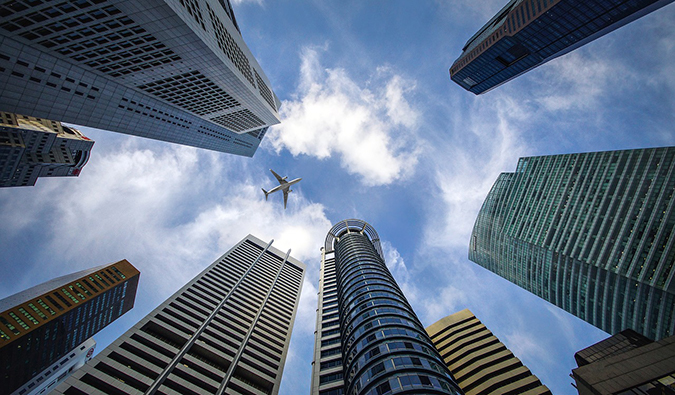
This is the quickest but most expensive way to get around Southeast Asia. There are a lot of budget airlines (like Ryanair or EasyJet in Europe) in the region: Scoot (merged with Tigerair), Jetstar, and AirAsia are the biggest. Nok Air has a lot of flights within Thailand, and VietJet Air is popular in Vietnam. Lion Air serves Indonesia, but its safety record is really spotty and I would not fly them.
Here are some sample prices for some of the biggest routes:
- Bangkok to Singapore – $55 (one way), $120 (round-trip)
- Phuket City to Vientiane – $95 (one way), $180 (round-trip)
- Ho Chi Minh City to Bangkok – $48 (one way), $108 (round-trip)
- Bali (Denpasar) to Kuala Lumpur – $75 (one way), $110 (round-trip)
- Siem Reap to Hanoi – $125 (one way), $169 (round-trip)
- Jakarta to Kuala Lumpur – $28 (one way), $56 (round-trip)
- Manila to Ho Chi Minh City – $80 (one way), $125 (round-trip)
- Yangon to Manila – $107 (one way), $226 (round-trip)
- Yangon to Bangkok – $45 (one way), $82 (round-trip)
If you book early, you can save on fares, as most of the airlines offer deeply discounted fare sales all the time, especially Air Asia. The best places to find cheap flights are Momondo and Skyscanner.
Keep in mind two things, though:
- First, budget airlines all fly from smaller, more out-of-the-way airports, so be prepared to take buses or taxis there (and plan for traffic).
- Second, all these airlines make their money by charging fees for everything, so expect baggage fees, credit card “convenience” fees, check-in fees, fees on fees, etc., etc.! If the fees add up, it can often be cheaper to fly one of the larger, more traditional air carriers, especially when you consider the main airport might be more centrally located.
All in all, I only recommend flying if you are pressed for time or find a super cheap deal.
Get Around Southeast Asia By Local or Tourist Bus
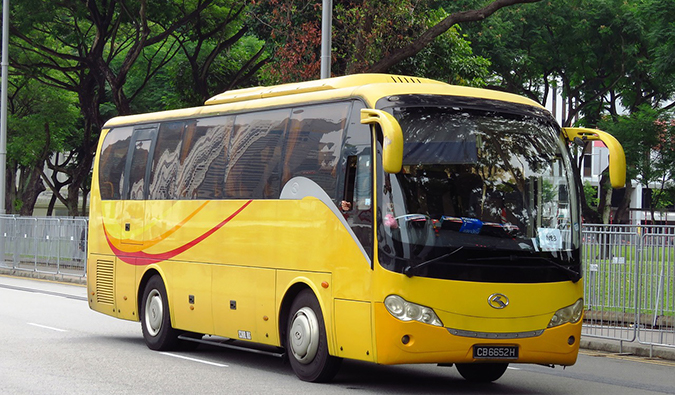
The easiest and cheapest way to travel around Southeast Asia is by bus. Buses will take you anywhere you want to go, no matter how far.
Buses are generally run by a plethora of small operators (there is no version of Greyhound here). You simply go with the operator that services the route you want to travel or with the company the tourist agency or guesthouse set you up with.
In Southeast Asia, you don’t have to plan ahead that much either. You simply show up at the bus station and buy your ticket! They use a first-come, first-serve basis but are rarely full. You don’t need to book them in advance or online — although, if I know where I’m going, I often book my bus the day before simply as a precaution. In all my years traveling this region, I’ve never shown up and been turned away.
Here are some sample fares and travel times for bus routes in Southeast Asia (in USD):
- Bangkok to Chiang Mai – $17 (10 hours)
- Bangkok to Pattaya – $4.75 (3 hours)
- Chiang Mai to Chiang Rai – $7.17 (3:40 hrs)
- Phnom Penh to Siem Reap – $12 (5:30 hrs)
- Kuala Lumpur to Singapore – $12.23 (5 hrs)
- Vientiane to Luang Prabang – $27 (10 hrs)
- Da Nang to Hanoi – $13.80 (14 hrs)
- Sihanoukville to Phnom Penh – $11 (4 hrs)
- Kuta Beach to Ubud – $6 (1 hr)
- Puerto Princesa to El Nido – $12 (5 hrs)
- Yangon to Bagan – $18.50 (9 hrs)
- Hanoi to Halong Bay – $7.35 (4 hrs)
Moreover, the backpacker trail in Southeast Asia is so well established that there is a very well-oiled “tourist bus” system here. (Usually, when you book buses from tourist agencies or guesthouses, they put you on these tourist buses.) These buses will pick you up at your accommodation or have a set meetup point in the tourist area and take you directly to your next destination.
For example, if you need to go from Bangkok to Chiang Mai, you’d buy a ticket, meet the bus (probably on Khao San Road), and enjoy the night ride up to Chiang Mai with other travelers. No stops at other bus stations — just a straight shot to Chiang Mai.
And while tourist buses are very convenient, they are also usually about 25% more expensive than the buses locals use. They generally cost $5-8 USD for a 5-6-hour journey; overnight buses are $22 USD or more depending on distance.
Get Around Southeast Asia By Backpacker Bus

There are two organized backpacker specific bus companies that serve Asia: Bamba Experience and Stray Asia. These are hop-on-hop-off buses that travel set routes across the continent.
Bamba Experience’s flexible passes start at around $600 USD for 15 days. Stray Asia’s pass is about $1,836 for a minimum of 40 days.
Personally, I’m not a huge fan of these services. You’re paying for flexibility, but it’s easy to get around the region as well as meet people, so I would skip this method of travel. Even if you’re a first-time traveler, the tourist buses can do everything these tours can do for you.
Get Around Southeast Asia By Train

Train service in Southeast Asia is basically nonexistent other than in Thailand, the only country that has an extensive train system around the country (and onward to Singapore), and Vietnam, which has a train along the coast, though it is slow and expensive compared to the bus (1,445,445 VND/$62 USD from Hanoi to Ho Chi Minh City instead of 695,865 VND/$30 USD).
Train prices are determined by distance and class, so the farther you go, the more you pay. Night trains with sleeper cars are more expensive than day trains: the night train to Chiang Mai from Bangkok takes 12 hours and costs 965 THB ($29 USD) for a sleeper seat, but that same train during the day is 230 THB ($7 USD).
You can travel by train between Singapore, Johor Bahru, Kuala Lumpur, Penang, and Bangkok as well. It’s a long journey that will take you over a day to get there, but you can find fares for as little as $80 USD. If you’re a train enthusiast, it’s one of the most classic rides out there. If you have the time, I highly recommend the experience.
Myanmar has train service but it’s very limited. There is no website for Myanmar Railways, but the ministry of rail transportation has a schedule (don’t depend on this though — you’re better off finding out exact times at a station). You can also use 12go.asia to look up routes and buy tickets. There are trains every day between Yangon and Mandalay, with stops in Bago, Taungoo, Naypyitaw, and Thazi. This entire 15-hour route costs about 4,600 K ($3 USD) for an ordinary seat and 12,750 K ($8 USD) for sleeper class. There are a handful of other routes as well, like Yangon to Inglee Lake via Thazi.
In Indonesia, the main cities of Java (Jakarta, Bandung, Surabaya, Probolinggo (for Mount Bromo), and Banyuwangi (the ferry terminal for Bali)) are well linked by train, including. Economy class to Jakarta to Surabaya takes 15 hours and costs about 104,000 IDR ($7 USD), while a 9-hour executive-class trip can cost up to 1,250,000 IDR ($90 USD). Surabaya to Probolinggo (for Mount Bromo) takes 2-3 hours and costs 29,000 IDR ($2 USD) for economy or 150,000 IDR ($11 USD) for executive class. Surabaya to Banyuwangi (for Bali) takes 6-7 hours and costs as little as 56,000 IDR ($4 USD) for economy or 190,000 IDR ($13.50 USD) for executive class. You can reserve your tickets at tiket.com.
Get Around Southeast Asia By Car/Motorbike
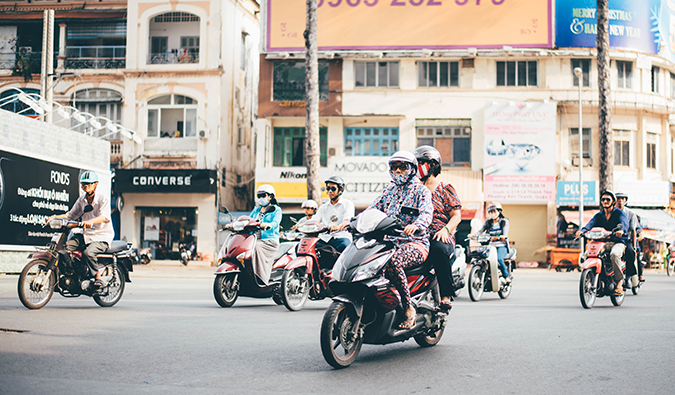
I don’t recommend renting a car. Rental cars are expensive and the roads here are nuts. I would never drive around the region.
However, a lot of people motorbike around the area. I don’t know much about this, but Travelfish does. He’s the guru on this. Check it out here.
Get Around Southeast Asia By Boat/Ferry
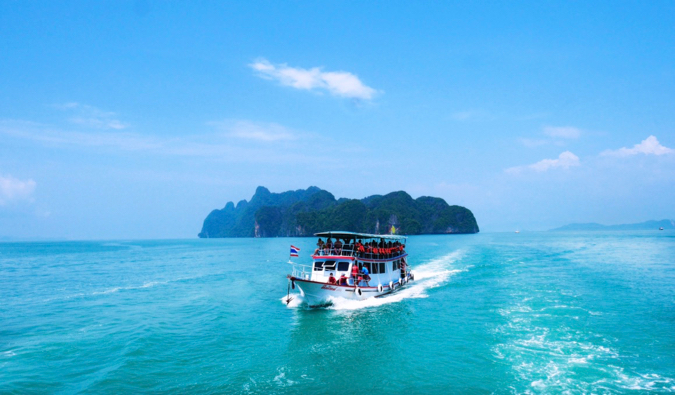
While this won’t be your main way of getting around, it will definitely come into play in certain countries. If you’re exploring the islands of Thailand, for example, you’ll need to rely on boats and ferries. And if you’re backpacking around Indonesia or the Philippines, ferries will be the cheapest way to island-hop (but definitely not the fastest!).
It’s worth noting that ferries in Southeast Asia don’t often adhere to Western safety standards and lack of life jackets is an issue. Some people recommend staying on the top deck so it’s easier to quickly leave the boat if necessary.
While it’s not necessary to book in advance, it’s a good idea during peak season or on more popular routes to book your tickets the day before you plan to travel to make sure you have a spot. You can buy tickets on the ferry company’s website or via a ticket agent like 12go.asia. However, every agent or hostel or hotel can get you a ferry ticket too. It’s really simple!
Here are a few sample routes and prices to help you plan:
- Bali (Padang Bai) to Lombok – $5 (one way)
- Bali to the Gili Islands – $30 (one way)
- Koh Tao to Koh Samui – $16 (one way)
- Sihanoukville to Koh Rong – $25 (round-trip)
- Manilla to Puerto Princesa – $30 (one way)
You might also consider doing a multiday cruise on popular waterways like the Mekong River or Halong Bay. On the Mekong River in Laos, slow boats from Huay-Xai will drop you off in Luang Prabang. Slow boats take 2-3 days, stopping at guesthouses for nightly accommodation. Prices will vary depending on the quality of your tour company, but a decent tour will run you around 1,000,000 LAK ($116 USD).
Halong Bay tours from Hanoi start around 850,000-1,403,377 VND ($35-60 USD) for two-day trips and increase exponentially from there.
Getting Around Towns on the Cheap

Local buses are really your best and cheapest option when you’re traveling in town as well. Fares typically cost less than $1 (and even less if you buy multi-trip passes). All of the towns you’ll visit will have reliable, affordable public bus systems.
In some of the bigger cities (Singapore, Bangkok, Kuala Lumpur), you’ll even find subways and tram systems. Jakarta and Hanoi are working on building their subway systems, but buses are still the best option in those places for now.
I normally advise budget travelers to skip taxis because they are way too expensive. But in Southeast Asia, you don’t have to always stick to this rule. Taxis and tuk-tuks (small shared taxis with no meters) are options here. They require a bit of haggling and cost more than public transportation, but they are clearly more convenient when you’re in a jam or not yet accustomed to an area.
In Singapore and Indonesia, taxi drivers do put on the meter. In Bangkok, you can get taxi drivers to use the meter, but if you’re hailing one in a tourist area, he might try to avoid using it. In Vietnam, the meter is usually rigged, but if you use a reputable company like Mai Linh, you won’t have any problems.
Grab (an Uber offspring) is a household name in Southeast Asia. It, too, is convenient, but it sometimes costs even more than a taxi. Gojek in Indonesia is a similar option. Be forewarned: If you order a Grab or Gojek, you might wind up on the back of a motorbike!
How Long Does it Take to Get Around Southeast Asia?

Here is a distance and travel-time table of how long it takes to get around Southeast Asia.
(km/miles)
Sihanoukville
Ho Chi Minh City
Vientiane
Bangkok
Phuket
Singapore
Kuala Lumpur
Lombok
(via ferry)
Bagan
Bali
(ferry
terminal)
Luang Prabang
El Nido
(ferry
terminal)
Boracay
(ferry
terminal)
In short, Southeast Asia is pretty easy to get around: take the train as often as you can in Thailand, take the train in Vietnam if you have the time, and take buses everywhere else. If you’re pressed for time, take the night trains or fly. And if you find a good flight deal, definitely fly!
Simple and easy.
As long as you do that you’ll be able to get around Southeast Asia on a budget and make the most efficient use of your time and money!
Book Your Trip to Southeast Asia: Logistical Tips and Tricks
Book Your Flight
Find a cheap flight by using Skyscanner or Momondo. They are my two favorite search engines because they search websites and airlines around the globe, so you always know no stone is being left unturned.
Book Your Accommodation
You can book your hostel with Hostelworld as they have the largest inventory. If you want to stay somewher eother than a hotel, use Booking.com, as they consistently return the cheapest rates for guesthouses and cheap hotels. I use them all the time.
Don’t Forget Travel Insurance
Travel insurance will protect you against illness, injury, theft, and cancellations. It’s comprehensive protection in case anything goes wrong. I never go on a trip without it, as I’ve had to use it many times in the past. I’ve been using World Nomads for ten years. My favorite companies that offer the best service and value are:
- World Nomads (for everyone below 70)
- Insure My Trip (for those over 70)
Looking for the best companies to save money with?
Check out my resource page for the best companies to use when you travel! I list all the ones I use — and I think they will help you too!
Looking for more information on visiting Southeast Asia?
Check out my in-depth destination guide to Southeast Asia with more tips on what to see and do, costs, ways to save, and much, much more!
Photo credit: 4
The post How to Get Around Southeast Asia on the Cheap appeared first on Nomadic Matt's Travel Site.
18 Free and Cheap Things to Do in Singapore
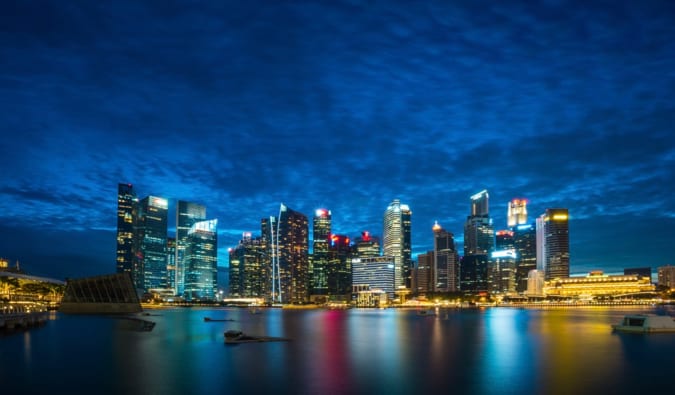
Updated: 2/27/2019 | February 27, 2019
Singapore is an expensive place to visit. There’s no way around it. The small city state is priced relative to the United States, which is a lot more expensive than its neighbors!
On a small stop-over trip, this isn’t a problem.
But on a big trip through the region, a trip into Singapore can elicit sticker shock, and it can turn people away if they’re trying to do the area on the cheap. If you still want to visit this country, though, there are still many ways to travel around Singapore on a budget.
Singapore has many free and cheap things to do when you vsiit that that will allow you to make the most of this big city!
Here’s a list of my favorite cheap and free things to do in Singapore!
1. Cool Off in the Underground Malls

The best places to cool off in this very hot city are the underground malls where the A/C’s cranking. You’ll be able to move around most of the city and never expose yourself to the heat and humidity. Since it gets cool at night, it can save you from having to pay extra for A/C at your hotel or hostel. Plus, you can spend your afternoon wandering underground Singapore without spending any money.
2. Eat Cheap Food in Little India
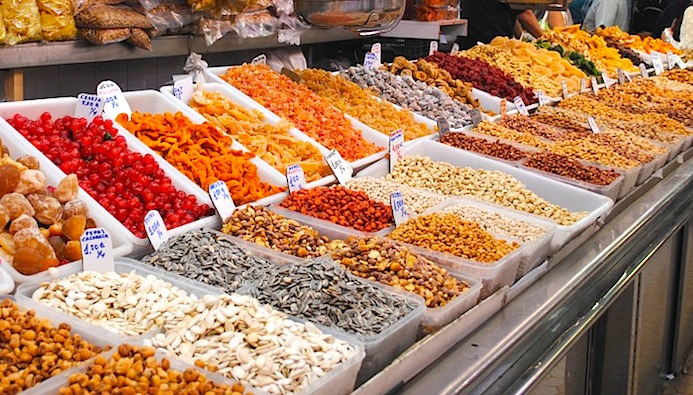
Singapore has some great food, but many of the restaurants are expensive. However, one of the best places to eat is the area of Little India, where great Indian meals cost as little as 5 SGD. Make sure you find the places where you can eat with your hands! They’re the most authentic and local places. You’ll probably be the only Westerner in there, though, so be prepared for people to stare. Eating at these places was still the most fun I had in Singapore.
Make sure you stop off at the Tekka Center, a hawker center with Indian clothing, groceries, and food. The food here is cheap and delcious and makes for an authentic Little India experience.
For a sit-down restaurant experience, head to Ananda Bhavan. It’s the country’s oldest vegetarian restaurant and is definitely worth a visit for some delicious Southern Indian cuisine. Even if you’re not a vegetarian you’ll still love it!
3. Eat Cheap Food in Chinatown
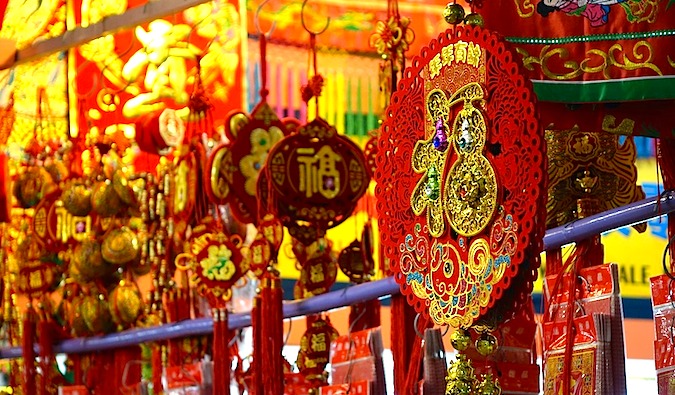
Another great place to eat cheap food is Chinatown. The dim sum here is great, most everything is in Chinese, the hawker food is also good, and there are a few cool temples here too. This is a wonderful place to not only eat but to also wander around. You’ll be able to cut down a lot of your food budget by sticking to the hawker stalls here and in Little India.
One of those food stalls is Hong Kong Soya Sauce Chicken Rice and Noodle (aka Hawker Chan), the world’s most affordable Michelin-starred restaurant. You can order a world-class dish here for under $2 USD. Be sure to eat here! Get here early as the line gets extremely long!
Tian Tian Hainanese Chicken Rice is another Michelin-starred hawker stall worth a visit if Hawker Chan’s is too busy. Like Hawker Chan’s, it’s located in the Maxwell Hawker Center.
In addition to exploring the Maxwell Hawker Center, you’ll want to also check out the Chinatown Complex Food Center and Chinatown Food Street. Those are the best places to find some of the cheapest and most delicious food in the city!
4. Eat Out for Lunch
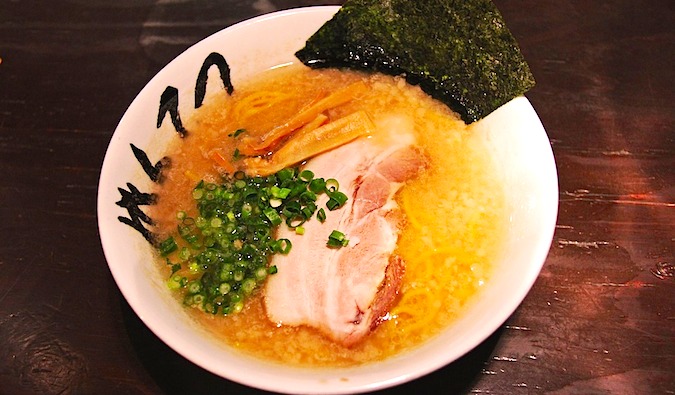
If you’re looking for a nice place to sit down and eat, then the best time to eat at Singapore’s famed restaurants is during lunch when restaurants offer 20% off, making them a great deal. The set lunches will give you dinner food at a discount and allow you a bit more variety in what you’re eating. Make sure to check out the restaurants in the underground mall, where you’ll find even more lunch specials.
5. Walk Around the Gardens

The Botanic Gardens are free and are a nice place to walk around—especially in the mornings and evenings when Singapore’s tropical weather cools down a little. Early in the morning, locals practice t’ai chi on the lawn, and there are often free concerts on weekends.
6. Combine the Singapore Zoo and Night Safari
 The Singapore Zoo is a must-see. It’s an open-air zoo, which is great because animals aren’t locked up in tiny cages. It’s actually one of the best zoos I’ve ever been to. They also offer a night tour in a different section of the park where you get to see the nocturnal animals. These activities aren’t very cheap, but if you combine them together, you’ll save a lot of money. It’s worth the price.
The Singapore Zoo is a must-see. It’s an open-air zoo, which is great because animals aren’t locked up in tiny cages. It’s actually one of the best zoos I’ve ever been to. They also offer a night tour in a different section of the park where you get to see the nocturnal animals. These activities aren’t very cheap, but if you combine them together, you’ll save a lot of money. It’s worth the price.
80 Mandai Lake Rd, +65 6269 3411, wrs.com.sg/en/singapore-zoo. Open daily from 8:30am-6pm. Admission to the zoo is 35 SGD for adults and 23 SGD for kids while the night safari is 47 SGD for adults and 31 SGD for kids. A combination ticket for the zoo and night safari is 68 SGD for adults and 48 SGD for kids.
7. Hit the Beach

If you need an escape from the busy metropolis, head to Sentosa Island. There, you can kick back and relax on the beach. There are actually 3 beaches to choose from here, depending on what you’re looking for. Siloso beach is where you’ll want to go for activities, Tanjong beach is a great spot to chill and enjoy a drink, and Palawan beach is where you’ll go if you’re traveling with kids. While you won’t be getting the beach experience you’d find in Thailand (there are tons of cargo ships in the water here!) it’s still a great place to escape for a day and soak up some rays.
8. See the Supertrees

Gardens by the Bay is a 250-acre nature park build on reclaimed land. It’s famous for its massive supertrees, 25-50m-tall vertical gardens that look like massive trees. The supertrees are home to all sorts of exotic plants and ferns and make for a stunning sight. While you have to pay to explore the conservatories, admission to the supertree garden is free.
9. Visit the National Museum of Singapore

While admission to the museum isn’t free, they do offer daily free tours which really makes a visit here worthwhile. This is the oldest museum in the country, having opened in 1849. The museum covers the history of the country, making it a great place to learn more about the country and how it came to be.
93 Stamford Road, +65 6332-3659, nationalmuseum.sg. Open daily from 10am-5pm. Admission is 15 SGD for adults and 10 SGD for students and seniors. Free tours are available at 11am and 2pm on weekdays and 11am, 1pm, 2pm, and 4pm on weekends.
10. Hike the MacRitchie Treetop Walk

The MacRitchie Trails cover over 11km of pathways around the largest reservoir in the country. It’s a place where the locals head for a run or a hike, and it’s a great place to get out and stretch your legs if you need to escape the city. Part of the trail includes a 250m aerial suspension bridge, which offers some nice views of the surrounding area. You can rent kayaks and canoes there, as well, and if you’re lucky you might spot one of the rare flying lemurs that call the park home!
MacRitchie Reservoir, +65 1800 471 7300, nparks.gov.sg. Open Tuesday-Friday from 9am-5pm and 8:30am-5pm on weekends. Admission is free.
11. See St Andrew’s Cathedral

This is the largest cathedral in the country, dating back to the 1850s. The cathedral was built in the Neo-Gothic style, and it was the first Anglican evangelical outreach in the country. The cathedral’s choir is actually the oldest musical institution in the country too. During WWII, it was used as a makeshift hospital until the Japanese invaded.
11 St Andrew’s Road, +65 6337-6104, cathedral.org.sg. Open from Monday-Saturday from 9am-5pm. Tours are free though they must be booked in advance.
12. Snap a Photo with a Merlion
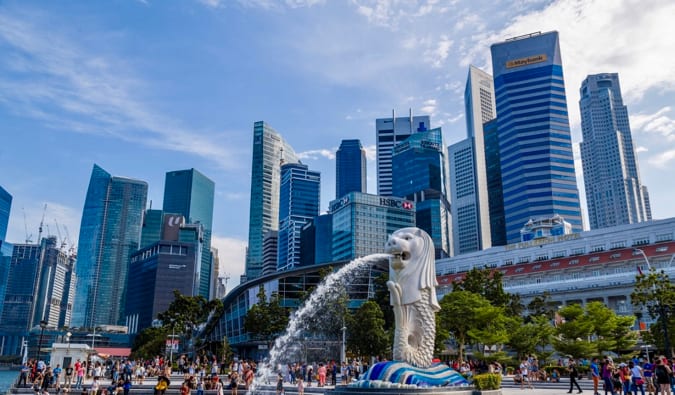
The merlion is a mythical creature that has the head of a lion and the body of a fish. It’s the mascot of the country and often considered the personification of Singapore itself. There’s a statue of a merlion in Merlion Park (near the Central Business District) that you can check out and snap a photo with. (There are actually 5 official merlion statues around the city, though the 2 in Merlion Park are the most famous).
13. Go Stargazing

Science Centre Singapore offers free stargazing every Friday (weather permitting) between January and November. This is a really cool activity and makes for a great educational experience for adults and children alike. Just keep in mind that there is limited space, so be sure to arrive by 7:30pm to claim a spot.
15 Science Centre Road, +65 6425-2500, science.edu.sg. Stargazing is every Friday from 7:45pm-10pm. Check their website for the most up-to-date details.
14. Take a day trip to Chek Jawa

This wetland nature reserve is located on an island a short ferry ride away from the city. There’s a winding boardwalk you can explore as well as a large viewing tower you can climb to take in the panorama. Bicycles are available for rent outside the park as well, in case you don’t want to hike. The area was originally slated for redevelopment but the locals protested the decision and now it’s one of the last bastions of natural habitat in the area.
Pulau Ubin, +65 6542-4108, nparks.gov.sg. Open daily from 8:30am-6pm. Admission is free.
15. Explore the Singapore Art Museum

The museum is home to the world’s largest collection of modern Southeast Asian art. Modern art isn’t my favorite style, but there were plenty of insightful and imaginative pieces here to keep you entertained. They also have regular guided tours in English, which definitely makes a visit worthwhile. If you want to save money, be sure to visit on Friday evening when admission is free!
8 Queen St, +65 6589-9580, singaporeartmuseum.sg. Open Saturday-Thursday from 10am-7pm and Fridays from 10am-9pm. Admission is 10 SGD per person, though there is free entry on Fridays from 6pm-9pm.
16. Visit Haw Par Villa
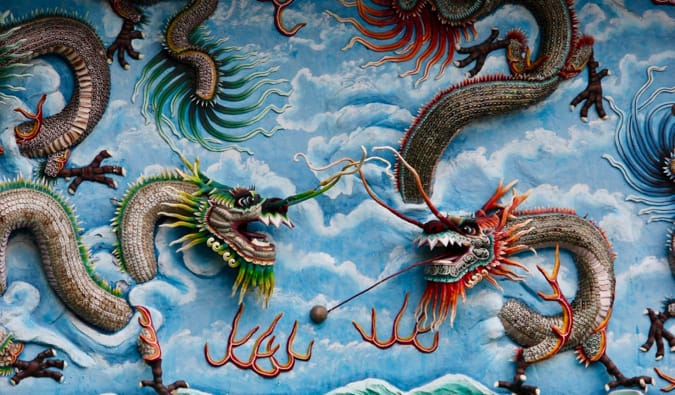
Also known as Tiger Balm Gardens, this theme park contains over 1,000 statues from Chinese folklore and mythology. The most popular section of the park is a depiction of the Ten Courts of Hell, an exhibit that shows what hell is like in Chinese mythology. The park was recently updated and renovated and is worth taking a stroll through.
262 Pasir Panjang Rd, +65 6773 0103, hawparvilla.sg. Open daily from 9am-7pm. Admission is free.
17.Buddha Tooth Temple
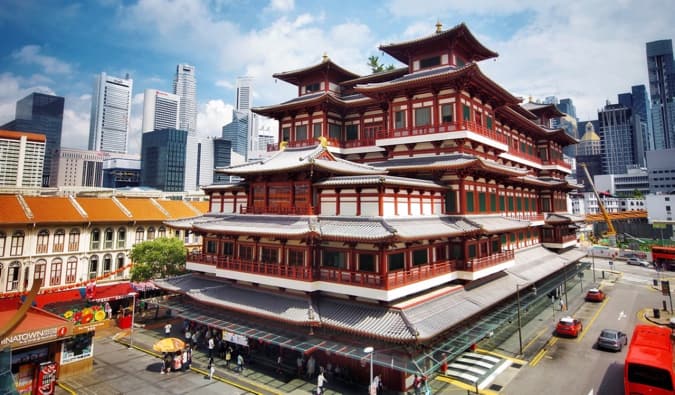
Located in Chinatown, this Buddhist temple is also a museum that is home to a tooth of the original Buddha. The four-story building was built in the early 2000s though it imitates architecture from the Tang Dynasty of China. The museum is home to one of almost a dozen “tooth relics” in the world, and while its legitimacy can be debated it’s still a cool temple to visit and explore.
288 South Bridge Rd, +65 6220-0220, btrts.org.sg. Open daily from 9am-6:30pm. Admission is free.
18. Sungei Buloh Wetland Reserve

This wetland is an ASEAN Heritage Park and another great place to escape the urban sprawl of Singapore. It was the first wetlands in Singapore to be made into a reserve due to its importance for migratory birds in Asia. There are dozens of bird species that call the park home, and there is also a family of otters you can spot playing in the water if you’re lucky!
301 Neo Tiew Cres, +65 6794-1401, nparks.gov.sg/sbwr. Open daily from 7am-7pm. Admission is free.
Singapore may not be the cheapest city in the world, but there are still some ways to make it less of a burden on your wallet. By eating cheap, walking, and taking advantage of discounts, you can easily do Singapore without busting your wallet!
Do you have any tips on how to visit Singapore on a budget? Leave them in the comments!
Book Your Trip to Singapore: Logistical Tips and Tricks
Book Your Flight
Find a cheap flight by using Skyscanner or Momondo. They are my two favorite search engines because they search websites and airlines around the globe so you always know no stone is left unturned.
Book Your Accommodation
You can book your hostel with Hostelworld. If you want to stay somewhere other than a hostel, use Booking.com as they consistently return the cheapest rates for guesthouses and cheap hotels. I use them all the time. My favorite places to stay are:
- Coral Hostel – This is a quiet hostel with fast WiFi and free coffee/tea as well as a free all day breakfast!
- Dream Lodge – This is a cool hostel with comfy beds that offer lots of privacy. There are lockers and plenty of outlets, and each bed has a curtain, which I really appreciate as a light sleeper!
Don’t Forget Travel Insurance
Travel insurance will protect you against illness, injury, theft, and cancellations. It’s comprehensive protection in case anything goes wrong. I never go on a trip without it as I’ve had to use it many times in the past. I’ve been using World Nomads for ten years. My favorite companies that offer the best service and value are:
- World Nomads (for everyone below 70)
- Insure My Trip (for those over 70)
Looking for the best companies to save money with?
Check out my resource page for the best companies to use when you travel! I list all the ones I use to save money when I travel – and I think will help you too!
Want More Information on Singapire?
Be sure to visit our robust destination guide on Singapore for even more planning tips!
Photo Credit 8, 10, 11, 12, 14, 15, 19, 20
The post 18 Free and Cheap Things to Do in Singapore appeared first on Nomadic Matt's Travel Site.
What Does Globalization Really Destroy?
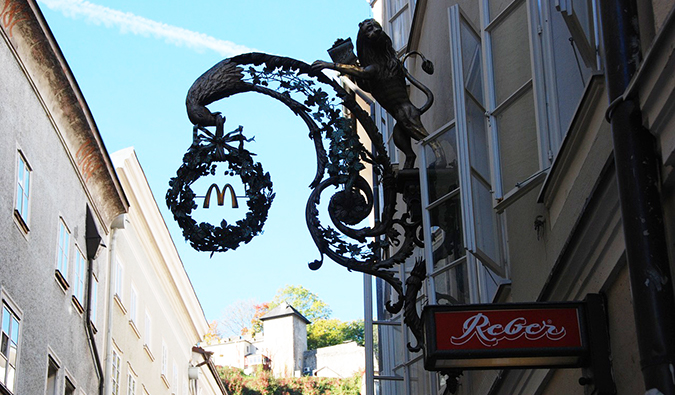
Posted: 2/25/2019 | February 25th, 2019
While walking down the streets of Medellín, I came across a Dunkin’ Donuts, a donut chain from my hometown of Boston. (It’s the best. Locals are quite attached to Dunkin. Don’t mess with a Massachusetts resident and Dunkin.)
As I looked at the store, a pit formed in my stomach and I got quiet and melancholy.
For days, I had been coming across Starbucks, McDonald’s, KFC, Papa John’s, and now, Dunkin’ Donuts!
Medellín had been overrun by the chains.
Another place ruined by globalization!
Another place where the local character was dying.
Or…was it? (Said in a Morgan Freeman narrator voice.)
Was that Dunkin’ Donuts really a bad thing?
Or that Starbucks I saw earlier? Or all those Papa John’s? (I mean that garlic butter sauce is amazing.)
As I continued down the street, a thought struck me: What had that Dunkin’ Donuts really ruined?
I mean the shops and stalls nearby were still full of life and brimming with customers buying snacks and coffee.
What was really bothering me?
Then it hit me.
I realized that maybe why I got sad was because what Dunkin’ Donuts really had destroyed was not Medellin but what I thought Medellin was.
As travelers, I think we tend to hate “globalization” because we imagine places to be a certain way from books, movies, and our collective cultural consciousness.
We often have this image — based on no firsthand experience — of what a destination should be like and how the people should act. We imagine deserted beaches, or quaint cafés, or rustic old towns, or gritty, worn-down cities because we saw that in a movie or read a book ten years ago. I mean, most Americans still think Colombia is teeming with narcos or that Eastern Europe is still like it was the day after the Iron Curtain fell.

We want the places we visit to fit into the box we mentally created for them. We want our image of them validated.
I mean we in part travel for a sense of adventure and exoticness. To be explorers and find spots devoid of any outside influence.
Globalization stops all that from happening.
Suddenly, we’re walking down the street — and we see a part of home.
Our illusion – the myth we created about the destination we are in – is shattered.
“Well, there’s a Starbucks. The tourists are here. This place is ruined now.”
But is that really a bad thing?
When we imagine how someplace should be — like Thai islands with little huts and empty beaches, or rural villages filled with only local food and pushcart vendors — we seek to freeze the world (and often with an air of leftover colonialism).
We forget that places aren’t Disneyland and it’s not 100 years ago. Things change. Places develop, mature, and move on. The world around us hasn’t stood frozen in time to act like our theme park. (And this doesn’t even touch the tip of the iceberg around the colonialism / Western stereotypes associated with these ideas.)
Would I rather see the world full of mom-and-pop stores and no Dunkin’ Donuts in Medellín?
On the surface, yes.
But if I really think about it, that’s because I want to escape my home, not be reminded of it. It’s because I’d like the world to match the one I see in books and movies. It’s because no one is completely immune to the views I just talked about. I’ve created a castle in the sky that I don’t want to see destroyed.
But part of the art of discovery is having your preconceptions shattered.
For example, most Americans (and maybe even most people in the world) view Colombia as this remote jungle full of coffee, crime, fruit, and narcos roaming the street. It’s gritty and dangerous.
But Colombia is nothing like people think it is. Medellín has one of the best transportation systems I’ve ever seen outside Scandinavia, and Wi-Fi is everywhere. There’s also some incredible Michelin star–worthy gastronomy taking place here. Bogotá has world-class museums. Digital nomads flock there. The roads are stellar. Many young people speak English, they are educated, and they are very informed of world events.
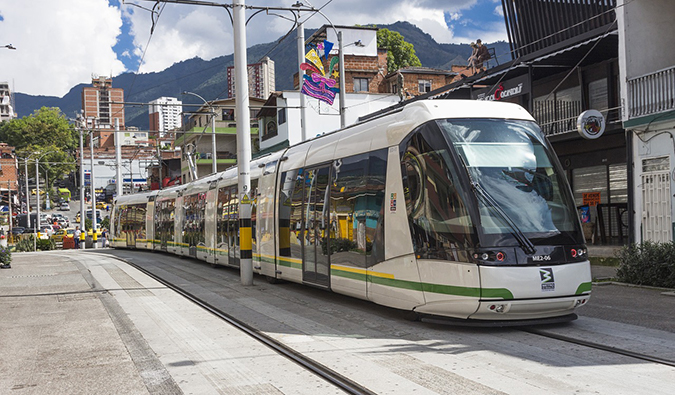
So, as Colombia sheds its narco past and embraces the world as much as the world embraces it, should we – I – be surprised that the guy riding in a little jeep is playing Taylor Swift, or that burgers and pizzas and gin and tonics are really popular? Should we be surprised that Colombians want a taste of the world too?
We often think of globalization as a one-way street, where the Western chains “invade” other countries. Our conversation in the West is always about how we’re ruining other places.
Yet these places don’t survive on tourist dollars alone. Locals do eat there. Who are we to tell them no?
And I often think about the reverse: when people from other non-Western cultures travel, do they have the same reaction?
Do Colombians travel somewhere and go, “Ugh, a mondongo place here? This place is ruined.”
Do Italians hate the sight of pizza on vacation?
Do the Japanese lament seeing sushi abroad?
I don’t want to see the golden arches next to the Pyramids, but is it so bad that there are some franchises in Egypt? Who are we to say, “Hey, you can’t have that. I want to imagine your country as this Arabian Nights fantasy! Get rid of that pizza place! Where are the guys on camels?”
Whether it’s a chain or just a type of cuisine, I don’t think the mingling of cultures is such a bad.
Globalization is not perfect. And, of course, its benefits aren’t balanced. People have written volumes on this subject. Let’s leave that aside. I’m not here to discuss that. I’m here to ponder globalization and our perceptions of it as travelers.
That Dunkin’ Donuts reminded me that the globalized world that allows me to be in Medellín also allows Colombians to access not only my culture but other cultures as well.
I think we need to stop viewing globalization through the myopic one-way lens of being a Western traveler.
Do we really want places to stay impoverished / secluded / unconnected so we can have an “authentic” experience based on some fantasy we have about a destination? Do we really not want the locals to experience pizza, or burgers, or Scotch, jazz music, or Thai pop, or anything else not local?
I don’t think we should look at globalization as causing a place to be “ruined.” Cultures are always in flux.
The same process that has brought unfamiliar cultures to us has also brought parts of our culture (among others) there.
When you have more cultures interacting with each other, you get to understand that everyone is a human being and shares the same wants and needs.
And I think that is something we should celebrate.
Matt’s note: Before everyone freaks out in the comments, let me be clear: I am not saying globalization is all rainbows and unicorns. There are a lot of problems with multi-national corporations, specifically, when it comes to taxes, labor, and how much money they keep in a country. There are also a lot of environmental and social problems related to outsourcing. Those are important social and economic issues that need to be addressed politically so that everyone can share the benefits of a more globalized world. I don’t deny there are problems. But this post is simply about looking at the issue from a traveler’s perspective.
Book Your Trip: Logistical Tips and Tricks
Book Your Flight
Find a cheap flight by using Skyscanner or Momondo. They are my two favorite search engines because they search websites and airlines around the globe so you always know no stone is left unturned.
Book Your Accommodation
You can book your hostel with Hostelworld as they have the largest inventory. If you want to stay somewhere other than a hotel, use Booking.com as they consistently return the cheapest rates for guesthouses and cheap hotels. I use them all the time.
Don’t Forget Travel Insurance
Travel insurance will protect you against illness, injury, theft, and cancellations. It’s comprehensive protection in case anything goes wrong. I never go on a trip without it as I’ve had to use it many times in the past. I’ve been using World Nomads for ten years. My favorite companies that offer the best service and value are:
- World Nomads (for everyone below 70)
- Insure My Trip (for those over 70)
Looking for the best companies to save money with?
Check out my resource page for the best companies to use when you travel! I list all the ones I use to save money when I travel – and I think will help you too!
The post What Does Globalization Really Destroy? appeared first on Nomadic Matt's Travel Site.
How to Get Around Thailand on the Cheap in 2019

Posted: 2/25/2019 | February 25, 2019
Thailand is one of the most popular backpacker destinations in Southeast Asia.
It’s also my favorite.
Of course, I’m biased.
Thailand was where I decided to quit my job and travel the world. I lived there for two years. I ran tours there. I speak the language. I feel at home there.
But that aside, Thailand remains popular some thirty years after the first hippies arrived on the “banana pancake trail” for a simple reason: it’s awesome.
The succulent food, the warm people, the postcard-perfect beaches, the lush jungles, the hot weather — Thailand is simply a wonderful place.
That said, Thailand is also a pretty big country.
What’s the best way to get around Thailand?
Well, how you will get around Thailand depend greatly on how long you’re staying. You have options!
So what should you do?
Here’s a breakdown of the best ways to travel around Thailand (including travel times) regardless of budget or the length of your stay in the country:
Table of Contents
Getting Around Thailand By Flying

Flying is obviously the most expensive but quickest way to get around. You can get pretty much anywhere in the country in two hours or less, making flying the perfect choice for people who are rushed for time.
Thai Airways is the largest (and costliest) carrier, but there are numerous budget airlines, like Thai Smile, Bangkok Airways, Thai Lion, AirAsia, and Nok Air. But avoid some of the smaller budget airlines like Orient Thai, as their safety records are pretty spotty.
Flights around Thailand generally cost 1,400-6,600 THB ($44-200 USD). Flights to the islands tend to be costlier than those between large cities like Bangkok and Phuket. Flights to Ko Samui are always more expensive than anywhere else, thanks to monopoly pricing by Thai Airways and Bangkok Airways.
Here are some sample fares (as of February 2019) so you can get an idea of how much flights cost:
- Bangkok to Chiang Mai – 780 THB/$25 USD (one way), 1,560 THB/$50 USD (round-trip)
- Bangkok to Phuket – 735 THB/$30 USD (one way), 1,311 THB/$42 USD (round-trip)
- Bangkok to Koh Samui – 3,715 THB/$119 USD (one way), 7,274 THB/$233 USD (round-trip)
- Chiang Mai to Phuket – 1,561 THB/$50 USD (one way), 2,997 THB/$96 USD (round-trip)
If you book early, you can save on fares as the budget carriers usually offer around 30-50% off tickets when they have sales — and they always have sales (especially Air Asia).
Keep in mind that each airline has different baggage fees and policies – budget airlines typically charge extra for like credit card processing (the stupidest of all fees), baggage fees, and preferred seating.
Getting Around Thailand By Train
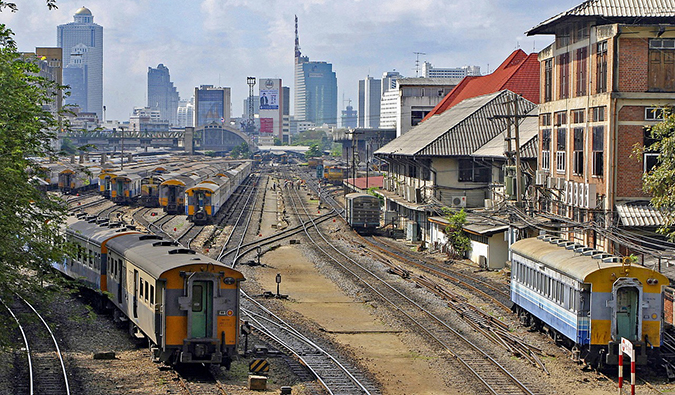
Thailand is one of the few countries in the region with a decent rail network. It covers 2,796 miles and is one of the best and cheapest ways to get around the country.
There are three classes of travel: first class is the most expensive and is available only on night trains. Second class is quite comfortable and has softer seats, as well as air-conditioned cars. Third class is bare-bones cars, with hard seats and no A/C. However, these are the cheapest seats around! (I actually like third class, though, as you meet more interesting people and there are always vendors coming on and off selling delicious and cheap food.)
Trains here move very, very slowly. The Chiang Mai-to-Bangkok night train — a distance of only 430 miles — takes 12 hours.
Day trains are even worse, as there are frequent stops and waiting at stations for reasons I’ve never figured out.
There’s no high-speed train in this country so don’t be in a rush if you’re traveling Thailand by train!
That said, I love traveling by train in Thailand if I’m not in a rush. The trains are spacious, there’s always food and drinks available, most of the cars have A/C, vendors get on and off at each stop to sell meals, fruit, or drinks, and the scenery as you cruise through the tropical countryside is out of this world.
It’s also crazy cheap, especially if you take the day train. Heck, even the night train is super cheap! Here are some example fares for both day and night trains:
- Bangkok to Chiang Mai – 890 THB/$28 USD (day train), 1,011 THB/$32 USD (night train)
- Bangkok to Chumphon – 550 THB/$17 USD (day train), 920 THB/$28 USD (night train)
- Bangkok to Surat Thani – 858 THB/$26 USD (day train), 1,058 THB/$33 USD (night train)
- Bangkok to Ayutthaya – 30 THB/$1 USD (day train)
- Ayutthaya to Chiang Mai – 866 THB/$27 USD (day train), 1,131 THB/$35 USD (night train)
- Ayutthaya to Lopburi – 30 THB/$1 USD (day train)
- Bangkok to Korat (Nakhon Ratchasima) – 425 THB/$13.50 USD (day train), 1,010 THB/$32 USD (night train)
- Korat (Nakhon Ratchasima) to Surin – 300 THB/$9.50 (day train)
- Korat (Nakhon Ratchasima) to Ubon Ratchathani – 243 THB/$7.75 USD (day train), 593 THB/$19 USD (night train)
You can see train schedules and ticket prices on the State Railway of Thailand website (railway.co.th).
You can buy train tickets through a travel agent (there’s a slight upcharge) or directly at the train station. You can buy tickets the day of travel — there’s always space, especially on the day trains. That said, if you are looking for a bed on the night train, I would book at least three days in advance to ensure you have a reservation, especially during high season.
Getting Around Thailand By Bus
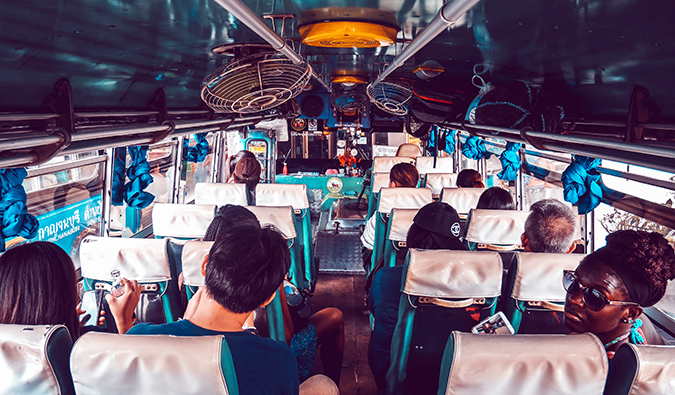
As trains don’t go everywhere in Thailand, taking the bus is your second-best option. Actually, buses are the widest form of transportation here. You can go anywhere in Thailand by bus. Though they often show bad Thai movies with the sound turned up too loud and blast the A/C, they are a comfortable and spacious ride.
If you’re taking a day bus, note that they often stop in multiple towns along the way to pick people up and drop them off, and they also pick up people by the side of the road. Don’t expect to move in an efficient or quick manner. They aren’t in a rush.
Be sure to tell them exactly where you want to go, because often there are no signs when you pull into bus stations.
There are also “tourist buses” that, while more expensive, are usually a lot more convenient. They are usually best for long distances (they tend to travel at night), and when combined with island ferry tickets (say, Bangkok to Ko Phi Phi). They are more expensive than local buses, but they are more direct, and you don’t have to worry about where you are or if it’s your stop. They usually pick up in the tourist area and drop you off in the tourist area of the next place — plus there’s no stopping to pick up other people along the way.
You can book these via the many travel agents that line the tourist areas of town.
Here are some sample fares for bus routes in Thailand:
- Bangkok to Chiang Mai – 534 THB/$17 USD (day bus), 830 THB/$26 USD (night bus)
- Chiang Mai to Pai – 150 THB/$5 USD (day bus)
- Chiang Mai to Chiang Rai – 229 THB/$7 USD (day bus), 312 THB/$10 USD (night bus)
- Lampang to Chiang Rai – 237 THB/$7.50 USD (day bus)
- Bangkok to Phuket City – 643 THB/$20 USD (day bus), 998 THB/$31 USD (night bus)
- Bangkok to Chumphon – 373 THB/$12 USD (day bus), 427 THB/$13 USD (night bus)
- Bangkok to Surat Thani – 858 THB/$27 USD (day bus), 1,058 THB/$33 USD (night bus)
- Bangkok to Hua Hin – 289 THB/$9 USD (day bus), 400 THB/$12 USD (night bus)
- Bangkok to Trat – 350 THB/$11 USD (day bus), 390 THB/$12 USD (night bus)
- Korat (Nakhon Ratchasima) to Surin – 291 THB/$10 USD (day bus)
- Surin to Ubon Ratchathani – 200 THB/$7 USD (day bus)
Getting Around Thailand By Car
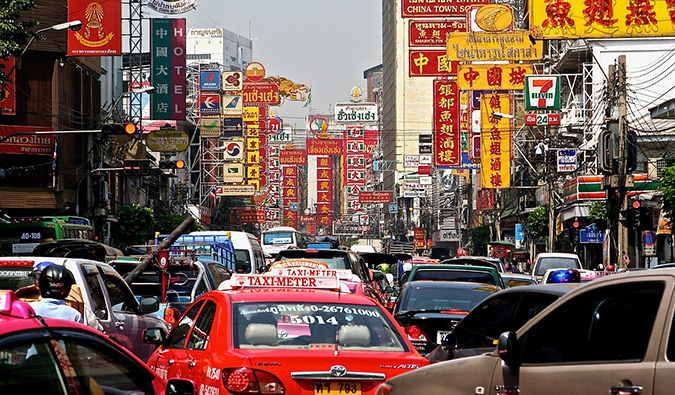
Don’t rent a car in Thailand. They are expensive, and the roads in Thailand are crazy.
It’s much better to rent a motorbike and ride across the country. It’s quite a common thing to do. This is a good article to help you plan a trip.
Getting Around Thailand By Ferry

While you won’t be using the ferry to get around Thailand, it will definitely be an important mode of transportation when you’re exploring the islands. Due to the well-established travel trail, booking your ferry ride is simple and straightforward – you can often book tickets online or just show up. Most hostels and hotels will be able to help you with this if you need assistance. They will also have the most up-to-date schedules.
Here are some example routes and fares to help you plan your trip:
- Koh Tao to Koh Samui – 500 THB/$16 (one way)
- Surat Thani to Koh Phangan – 625 THB/$20 (one way)
- Phuket to Koh Phi Phi – 780 THB/$25 (one way)
- Krabi to Koh Lanta – 550 THB/$17 (one way)
How Long Does It Take to Get Around Thailand?
Trying to figure out how long it will take you to get from point A to point B? Here is a distance and time chart so you can get an idea of how long it takes to get from place to place.
(km/miles)
Chiang Mai
Phuket City
Chumpon
Chiang Mai
Bangkok
Chiang Rai
Bangkok
Koh Samui
Krabi
Ubon Ratchathani
*No direct flights.
**Includes ferry
What’s the Bottom Line on Getting Around Thailand?
Trains are the best way to get around Thailand cheaply and in comfort, night buses are great for places that aren’t serviced by the train, and if you’re short on time, just fly.
***
That’s it. These are the best ways to get around Thailand. It’s pretty easy, as visitors have been traveling around here for decades and there’s an extensive network to make sure you can get from A to B no matter what!
If you have any questions, leave them in the comments!
Updated! Nomadic Matt’s Guide to Thailand
Want to plan the perfect trip to Thailand? Check out my comprehensive guide to Thailand written for budget travelers like yourself! It cuts out the fluff found in other guides and gets straight to the practical information you need to travel and save money. My guide will help you with:
- Budget advice from a budget travel expert
- Suggested itineraries with maps to help save time planning
- The best things to see and do (while avoiding tourist traps)
- My favorite non-touristy restaurants and bars
- Finding the best lodgings for your wallet, with advice from a professional budget traveler
- Transportation advice that will show you the easiest and cheapest ways to get around
- An extensive list of important information for travelers to this region
- And much more!
>>> Download my guide to Thailand <<<
Book Your Trip to Thailand: Logistical Tips and Tricks
Book Your Flight
Find a cheap flight by using Skyscanner or Momondo. They are my two favorite search engines, because they search websites and airlines around the globe so you always know no stone is being left unturned.
Book Your Accommodation
You can book your hostel with Hostelworld as they have the largest inventory. If you want to stay somewher eother than a hotel, use Booking.com, as they consistently return the cheapest rates for guesthouses and cheap hotels. I use them all the time.
Don’t Forget Travel Insurance
Travel insurance will protect you against illness, injury, theft, and cancellations. It’s comprehensive protection in case anything goes wrong. I never go on a trip without it, as I’ve had to use it many times in the past. I’ve been using World Nomads for ten years. My favorite companies that offer the best service and value are:
- World Nomads (for everyone below 70)
- Insure My Trip (for those over 70)
Looking for the best companies to save money with?
Check out my resource page for the best companies to use when you travel! I list all the ones I use to save money when I travel — and I think they will help you too!
Looking for more information on visiting Thailand?
Check out my in-depth destination guide to Thailand with more tips on what to see and do, costs, ways to save, and much, much more!
Photo Credit: 2
The post How to Get Around Thailand on the Cheap in 2019 appeared first on Nomadic Matt's Travel Site.










